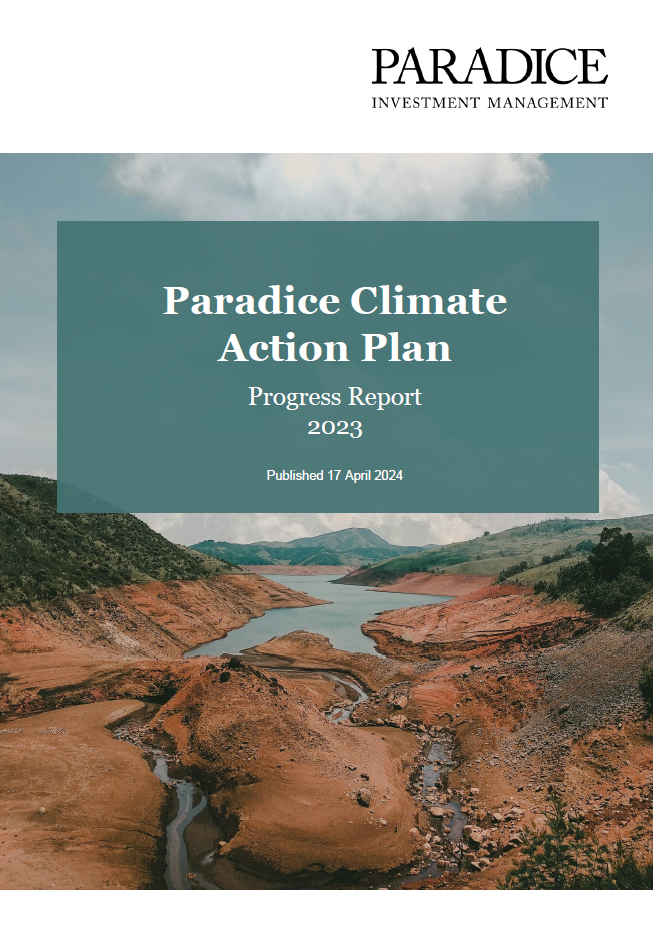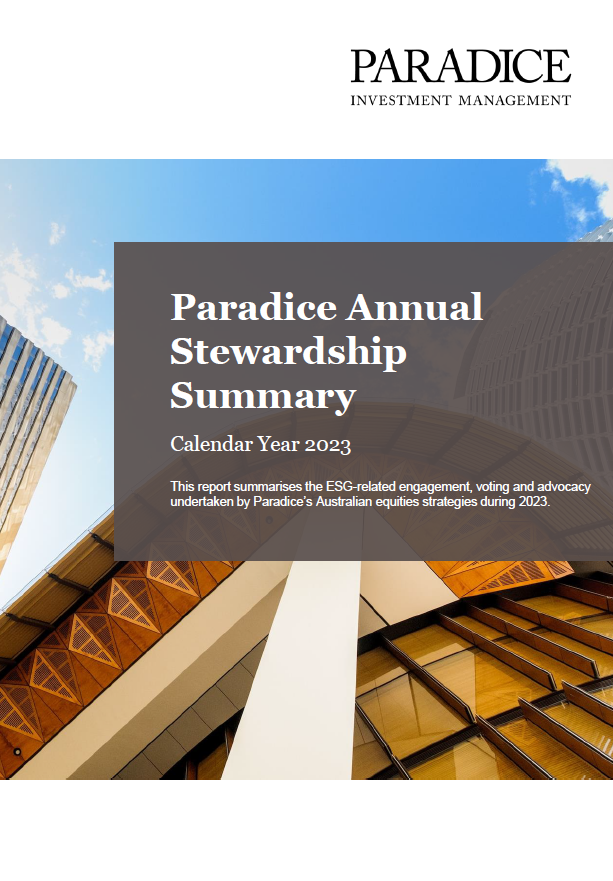Paradice Climate Action Plan Progress Report 2023
- Published
After having published our inaugural Climate Action Plan (CAP) in late 2022, we have prepared a progress report on the first full year of implementation of our multi-year plan.
Following the structure of our CAP, across the three pillars of Governance, Investments and Stewardship & Advocacy, we provide an update on the status of activities intended for completion or commencement in CY2023. We also share some highlights from our climate-related stewardship efforts.
Read the Report here
Disclaimer:
This material (or any contribution to it) is not intended to constitute advertising or advice (including legal, tax or investment advice or security recommendation) of any kind. It is of a general nature only and was current only at the time of initial publication. The information and opinions contained herein are not necessarily all-inclusive and, as such, no representation or warranty, express or implied, is made as to the accuracy, completeness or reasonableness of any assumption contained herein and no responsibility arising for errors and omissions (including responsibility to any person by reason of negligence) is accepted by Paradice, its officers, employees or agents. It may contain certain forward looking statements, opinions and projections that are based on the assumptions and judgments of Paradice with respect to, among other things, future economic, competitive and market conditions and future business decisions, all of which are difficult or impossible to predict accurately and many of which are beyond the control of Paradice. Because of the significant uncertainties inherent in these assumptions, opinions and judgments, you should not place undue reliance on these forward looking statements. You should consider your own needs and objectives and consult with a licensed financial adviser. For the avoidance of doubt, any such forward looking statements, opinions, assumptions and/or judgments made by Paradice may not prove to be accurate or correct. References to securities may or may not represent the holdings of the Paradice Funds. The content of this publication is current as at the date of its publication and is subject to change at any time. It does not reflect any events or changes in circumstances occurring after the date of publication.










Comments